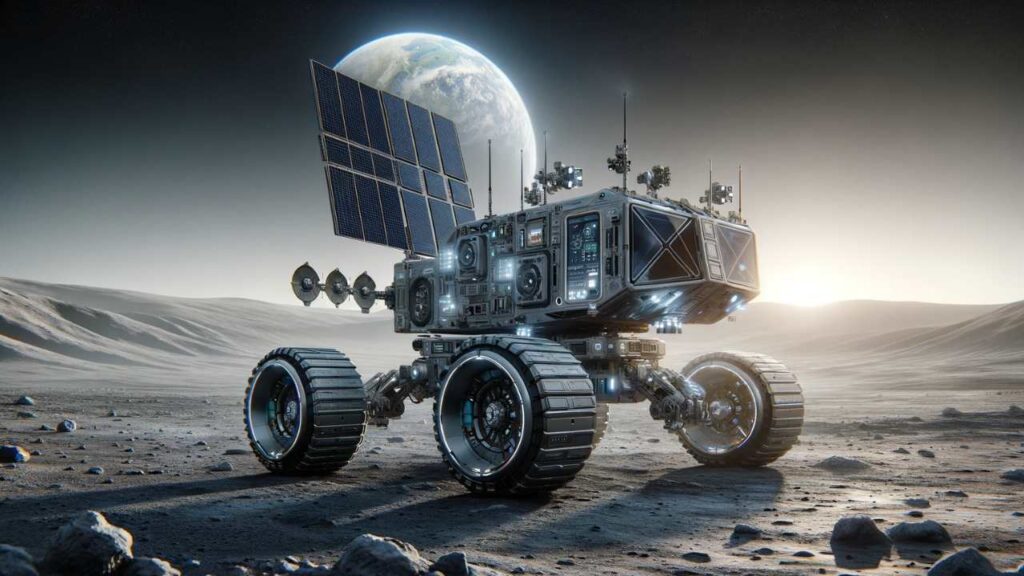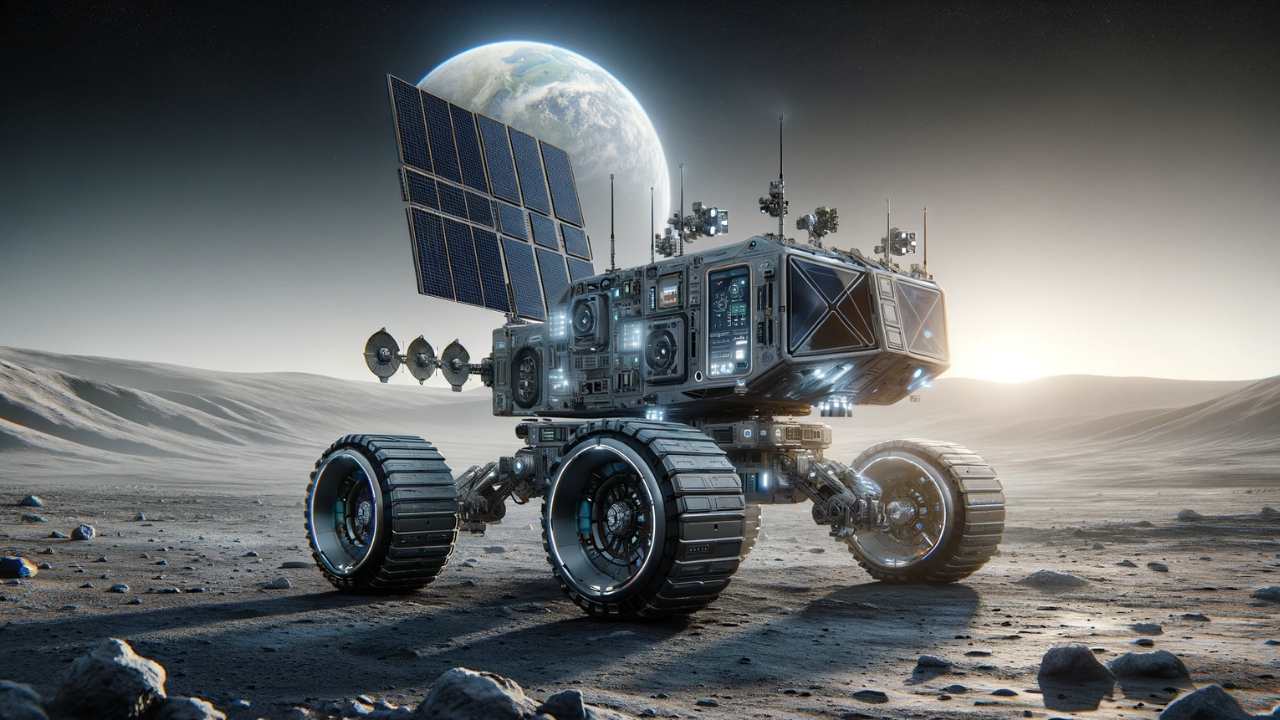NASA, Lunar Terrain Vehicle, Artemis Program, Moon Exploration, Lunar Rover, Space Technology, Human Spaceflight, Lunar Surface, Space Missions
“Explore the pivotal role of NASA’s Lunar Terrain Vehicle (LTV) in the Artemis missions, aimed at revolutionizing lunar exploration. Discover the design, features, and impact of the LTV as it prepares to transport astronauts across the Moon’s challenging terrain, paving the way for a sustainable human presence on the lunar surface.”

NASA’s Lunar Terrain Vehicle
The National Aeronautics and Space Administration (NASA) is on a quest to expand human exploration of the lunar surface through its ambitious Artemis program. A pivotal element of these missions is the selection of a Lunar Terrain Vehicle (LTV), designed to transport astronauts across the Moon’s challenging and diverse landscapes. This development marks a significant milestone in lunar exploration, promising to enhance scientific research and the sustainability of human presence on the Moon.
The Artemis Program: A New Lunar Dawn
The Artemis program, named after the Greek goddess and twin sister of Apollo, signifies a new era in lunar exploration. It aims to land the first woman and the next man on the Moon by the mid-2020s, with a broader vision of establishing a sustainable human presence by the end of the decade. This ambitious endeavor will involve multiple missions, each building on the success of its predecessors, to explore more of the lunar surface than ever before.
The Role of the Lunar Terrain Vehicle
The LTV is more than just a mode of transport; it’s a mobile base of operations equipped with cutting-edge technology. Unlike the rovers used in the Apollo missions, the new LTV will need to be versatile, capable of supporting a variety of scientific missions, and adaptable to the Moon’s extreme conditions. It will have to navigate rugged terrain, withstand drastic temperature changes, and provide life support systems for astronauts exploring the lunar surface.
Design and Features of the LTV
The design of the LTV is focused on robustness, flexibility, and efficiency. It is expected to feature all-terrain capabilities, advanced navigation systems, and autonomous operation to assist the crew. Solar power is a likely energy source, ensuring sustainability and the ability to recharge during lunar days. The vehicle must also be capable of long-duration missions, potentially lasting weeks, to maximize the exploration potential during each Artemis mission.
Selection Process and Criteria
NASA’s selection process for the LTV involves rigorous evaluation of proposals from various aerospace companies. The criteria for selection include not only technical capabilities and design innovation but also cost-effectiveness and the ability to meet the Artemis program’s stringent timeline. The chosen LTV design will need to demonstrate reliability and safety in the harsh lunar environment, ensuring the well-being of astronauts and the success of their missions.
The Impact on Lunar Exploration
The introduction of the LTV will revolutionize lunar exploration, allowing astronauts to travel farther and explore more diverse lunar regions than ever before. It will enable the study of geologically interesting sites, the collection of diverse samples, and the conduct of experiments that could unravel the Moon’s mysteries. Moreover, the LTV will play a crucial role in establishing a sustainable human presence on the Moon, serving as a foundation for future lunar infrastructure and exploration.
Conclusion
The selection of the Lunar Terrain Vehicle is a cornerstone in NASA’s Artemis missions, embodying the spirit of innovation and exploration. As NASA prepares to return humans to the Moon, the LTV stands as a symbol of the technological advancements and collaborative efforts that make this journey possible. With the LTV, astronauts will unlock new chapters in lunar exploration, paving the way for humanity’s future in space.
Read Also –
